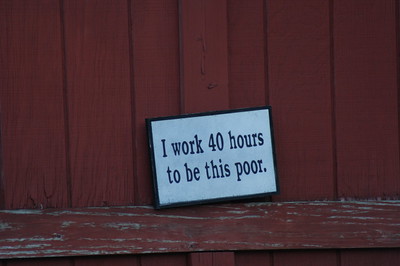A recent report by researchers at Brandeis University found that one-third of American families do not earn enough to pay for their basic needs. Among low-income families, the number living in poverty shifts to 75%. Necessities include housing, food, childcare, medical care, and transportation.
According to the researchers, these families would need to earn an additional $11-$12 per hour to be able to sustain a basic household budget. Annualized, that’s an income gap of between $23,000-$25,000. This level of poverty hits Black and Hispanic families especially hard. The researchers found that 50%-60% of Black and Hispanic families experienced this level of poverty, compared to 23%-25% of Asian and White families.
The researchers found that Black and Hispanic workers, who typically accept lower-wage work, received fewer employment benefits. Specifically, that lack of access to benefits impacted the workers’ access to health insurance and retirement savings plans. Without these, low-wage earners are more likely to forgo medical care, which can cost more in the long run. Additionally, they are more likely to be impacted by unexpected medical bills. The inability to save for retirement can require these workers to remain in the workforce long after they are physically able to work.
At its core, a community college is supposed to address these circumstances by preparing workers for high wage jobs at a low cost. When community colleges can’t or don’t succeed here, the entire community suffers. And the suffering isn’t only immediate. Low wage jobs damage people’s quality of life, their ability to prosper economically, and their ability to survive financially in retirement.
Poverty doesn’t simply “go away”
In addition, poverty is passed down from generation to generation. Researchers at UC Davis found that the one-year exit rate from poverty is 56%. For those who do not escape poverty in a timely way, the data aren’t good. After living in poverty for seven years, the escape rate declines to just 13%. The longer one lives in poverty, the less likely one is to escape.
Therefore, it is critical for community colleges (like Washtenaw Community College) to develop academic programs that give people access to high wage jobs. Without that access, the poor remain poor. Currently, a living wage in Washtenaw County is $19.12. If you have one kid, your living wage just shot up to $41.31.
Washtenaw Community College administrators like to believe “we’re in a rich community.” They have literally said as much. (And frankly, that’s why they’re here.) But the community is truly rich only when the opportunity to succeed is available to everyone. Promoting $12/hour jobs isn’t doing any favors for the community. It is ensuring that the impoverished remain impoverished while WCC executives throw around plans to use the county’s property tax collections to build a campus hotel.
So, WCC – what do you call a Washtenaw County family that needs to earn an additional $25,000 per year?






























